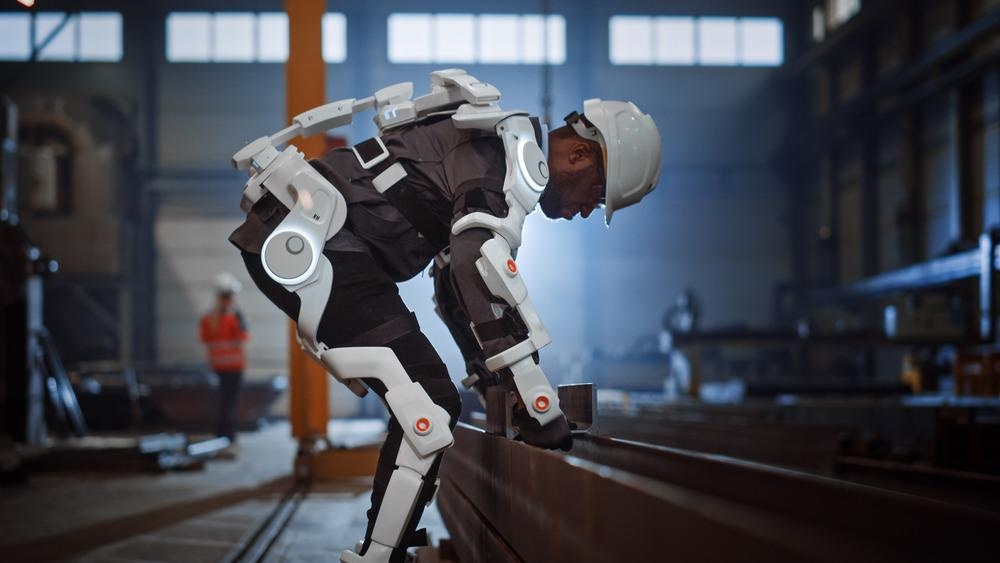Scientists from the RIKEN Guardian Robot Project and their co-workers have utilized the integration of lightweight material engineering and artificial intelligence to make an exoskeleton robot that can aid those with mobility impairments.

Image Credit: Gorodenkoff/Shutterstock.com
A crucial component of this new tool is the technology that enables the skeleton to predict the objectives of the user successfully.
Robotic exoskeletons are suits that people can adorn, allowing them to apply strength when their aging physiques are incapable of applying strength by themselves.
However, developing exoskeletons has a disadvantage because they are usually hefty, and when not controlled properly, they can be hindrances instead of providing assistance. Hence, it is essential to design exoskeletons that are lightweight, as well as can help the user without hampering their efforts.
The current study incorporated two significant elements: first, the scientists designed a lightweight, carbon fiber-based exoskeleton for the lower part of the body that was worn to the lower legs and thighs of users.
So as not to impede the users’ mobility even while the actuators were switched off, the exoskeleton was constructed with highly back-drivable actuators. And on top of it, the team looked for aid from artificial intelligence to see if they could anticipate how the user wanted to mobilize.
Researchers employed an approach called PU-learning, or positive and unlabeled, to make the exoskeleton learn to properly read the user intentions, depending on measurements of the user muscle activities.
The PU-classification approach enables ambiguous data usage by integrating positively labeled data, which is known to be correct by the machine, along with other unlabeled data that can be positive or negative, which allows the artificial intelligence to study from unlabeled data.
For the experiment purpose, participants did several movements that could start in a similar manner—stand up, cross legs, lean forward, and reposition in a chair. Using machine learning, the exoskeleton learned to predict when people are trying to stand up and provide help for the movement.
It was a successful experiment. According to Jun-ichiro Furukawa of the Guardian Robot Project, who is also the first author of the study, the findings were better than traditional systems that employ completely labeled data in situations where the behavior of users other than the target sit-to-stand motion could happen. Overall, this highlights that the approach can also be extended to other movements.
The key element of our research is that when controlling a robot to assist human movement, it is important to develop it based on the assumption that humans will behave in ways that are not in the learning data.
Jun Morimoto, RIKEN Research Institute
The research was headed by scientists from the RIKEN Guardian Robot Project, a dedicated project for creating robotic tools that could help people in need of assistance, along with scientists from the RIKEN Center for Brain Science, ATR Computational Neuroscience Labs, Kyushu University, and Kyoto University.
Journal Reference:
Furukawa, J., et al. (2022) Selective Assist Strategy by Using Lightweight Carbon Frame Exoskeleton Robot. IEEE Robotics and Automation Letters. doi.org/10.1109/LRA.2022.3148799.
Source: https://www.riken.jp/en/